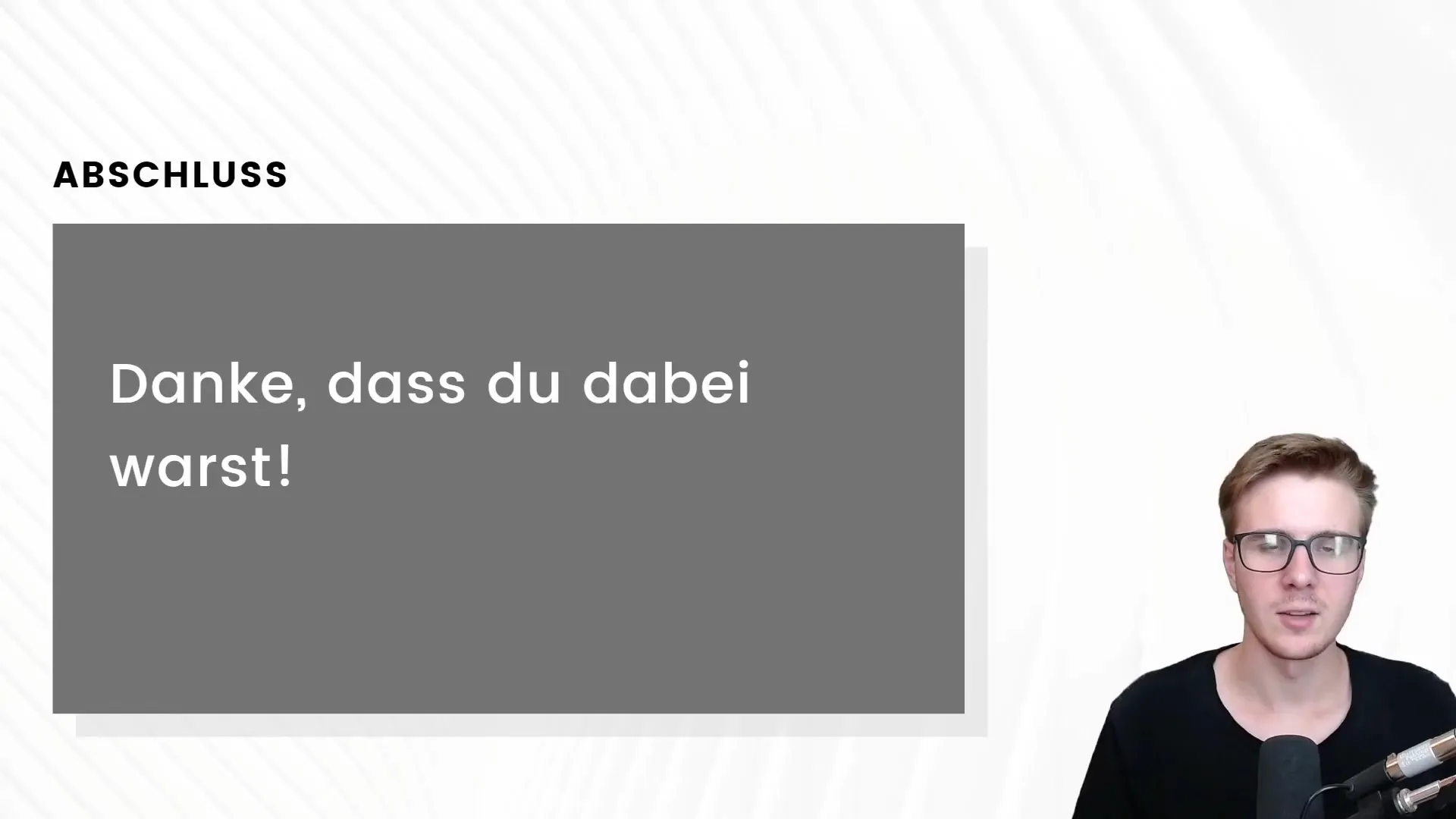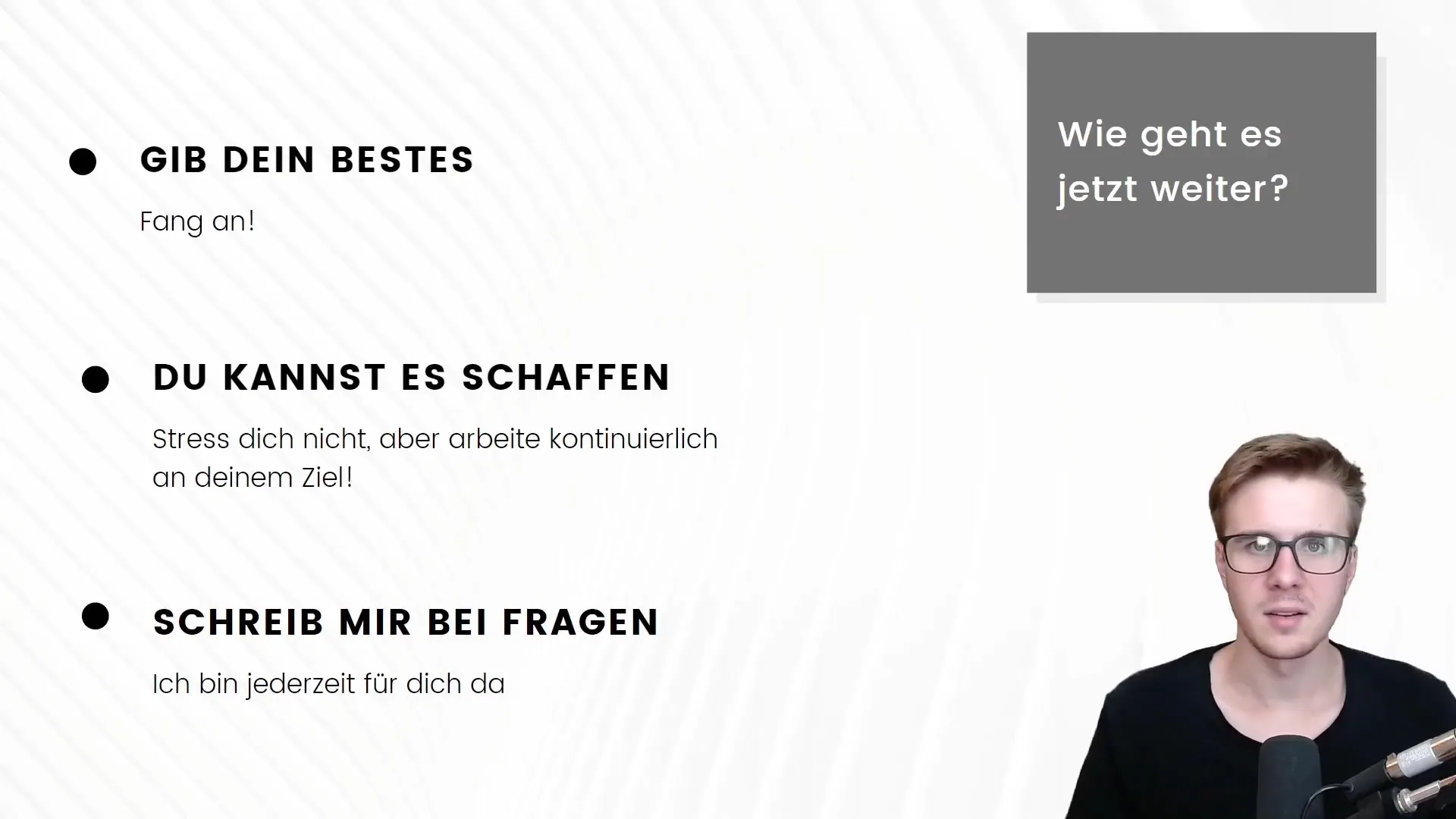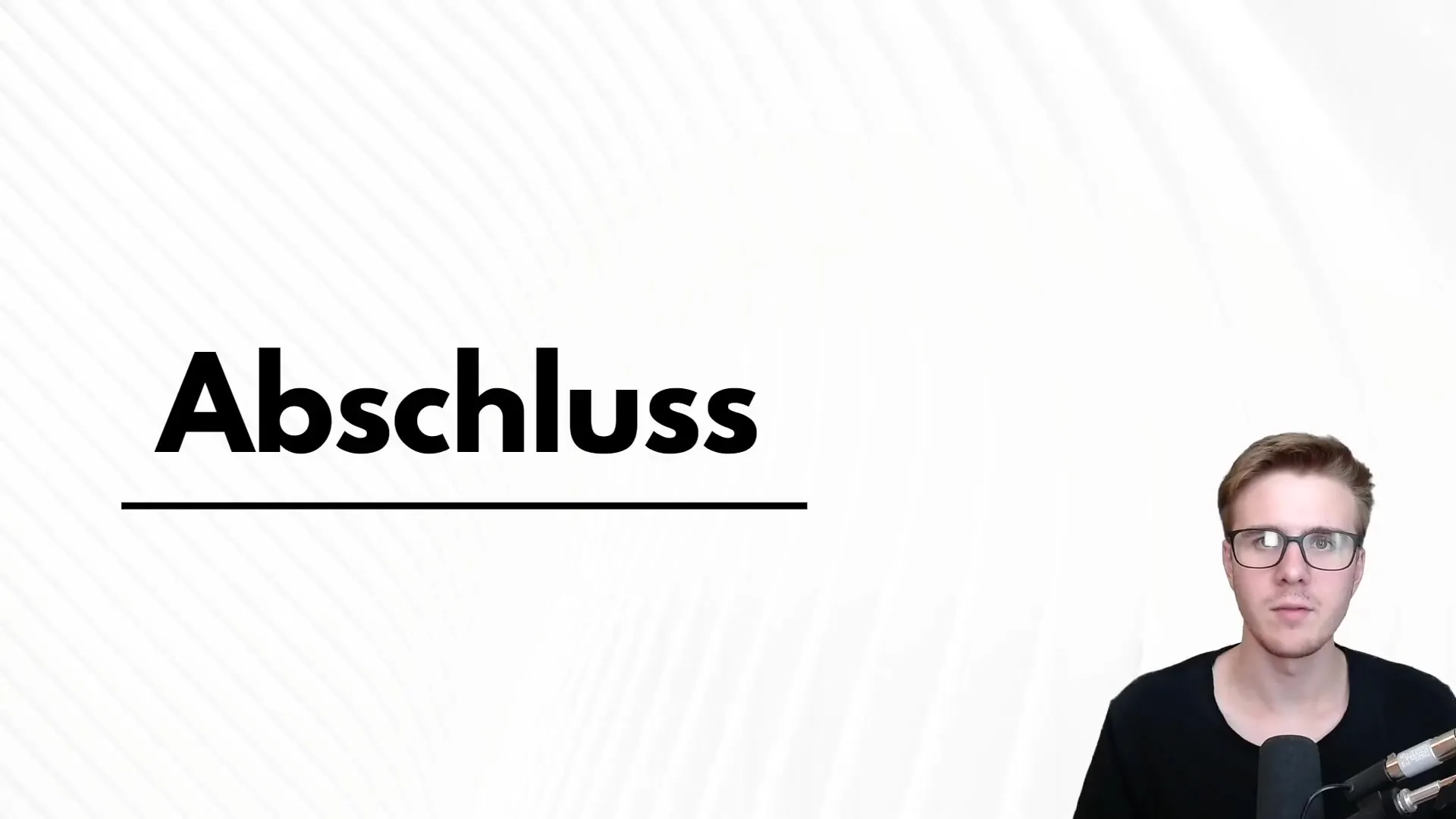When it comes to using software like Paint.NET, there is often a point where learning and practicing what you've learned meet. After an intense learning journey, it is now time to plan the next steps and think about how you can effectively apply your newly acquired knowledge in practice. In this final tutorial, I want to give you some guidance on how to make the most out of this course and the materials you have learned.
Key Insights
To truly make progress, you must actively apply what you have learned. Theory alone is not enough. Schedule regular practice sessions to reinforce and further develop your knowledge. I am always available to answer any questions you may have.
Step-by-Step Guide
Start putting your knowledge into practice. You have now learned the theoretical foundations of Paint.NET, and the next step is to actually work with the software.

If you want to put what you have seen into action, one method is to reserve a specific time slot daily to work with Paint.NET. Generally, short, continuous practice sessions are beneficial, rather than working intensively once a week for several hours. The brain processes information better when not overwhelmed.
It is important not to put pressure on yourself. Anyone can learn anything if they consistently put in effort and do not rush ahead. You can best work with small daily progress, such as spending half an hour each day on a specific topic. This segmentation helps you stay focused and motivated.

However, before moving on to new content, I recommend taking a short break after this course. This gives your brain the opportunity to process what you have learned, and you can actively try out what you have learned so far. Take time for things that you enjoy and that interest you.
If you have any questions, do not hesitate to contact me. You can send me an email anytime, and I will help you as soon as possible. Please understand if the response sometimes takes a bit of time.
Thank you for participating in this course. It was a pleasure to accompany you on this journey. I hope that you have not only gained a lot of new knowledge but are also inspired to continue learning. Perhaps we will see each other again in one of the upcoming courses.

Summary
In this final tutorial, I have emphasized the importance of actively applying what you have learned. Schedule regular practice times and do not hesitate to ask questions. After the course, give yourself a short break to reflect on what you have learned. Thank you for your participation, and I hope to see you again soon.
Frequently Asked Questions
What should I do after this course?Put what you've learned into practice and schedule regular practice sessions.
How often should I practice?Thirty minutes daily is more effective than learning intensively for many hours once a week.
Can I ask questions?Yes, you can send me an email anytime, and I will be happy to assist you.
How can I ensure that I retain what I have learned?Practice regularly and take time to reflect on what you have learned.

